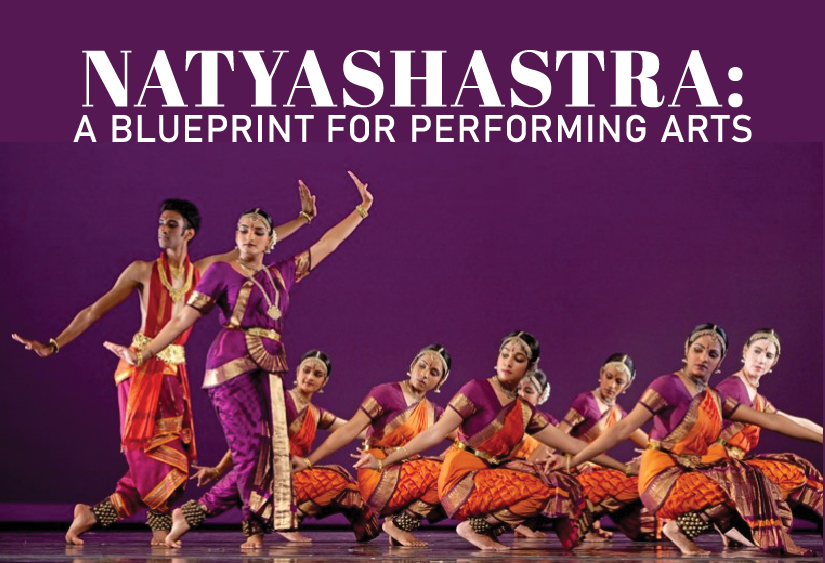
Article by
The Natyashastra, an ancient Indian treatise, stands as a cornerstone of the performing arts, offering an encyclopedic exploration of dance, music, and drama. This seminal work, attributed to Bharata Muni, delves deep into the aesthetics, techniques, and philosophy underlying these art forms. At its core, the Natyashastra posits that dance and music are inseparable, two wings of the same bird, and essential to the creation of a compelling theatrical experience.
Dance, as delineated in the Natyashastra, is categorized into two primary forms: Nrtta and Nritya. Nrtta refers to pure dance, devoid of narrative, focusing on rhythmic patterns and bodily movements. It is the foundation upon which the more expressive Nritya is built. Nritya, on the other hand, is imbued with meaning, conveying emotions, stories, and characters through gestures, expressions, and footwork. The Natyashastra meticulously outlines the various aspects of Nritya, including the importance of mudras, or hand gestures, which serve as a visual language. The text also emphasizes the significance of abhinaya, or acting through dance, where the dancer becomes a conduit for expressing a wide range of emotions.
Music, an equally vital component of the Natyashastra, is intricately intertwined with dance. The text explores the theory of raga, the melodic framework that forms the basis of Indian classical music. It delves into the intricacies of tala, the rhythmic structure that provides the pulse for both music and dance. The Natyashastra also discusses the various musical instruments, their role in creating different moods, and their harmonious interplay with the human voice. Importantly, the text emphasizes the importance of music in enhancing the dramatic impact of a performance.
The Natyashastra goes beyond mere technicalities, delving into the philosophical underpinnings of dance and music. It explores the concept of rasa, or aesthetic emotion, which is central to Indian classical arts. The text posits that the ultimate goal of a performance is to evoke a particular rasa in the audience. Whether it is love, joy, sorrow, anger, or wonder, the dancer and musician must collaborate to create an immersive experience that transports the spectator to a different realm.
Moreover, the Natyashastra emphasizes the spiritual dimensions of dance and music. It suggests that these art forms can be a path to self-realization and liberation. The text explores the connection between the human body and the cosmos, suggesting that dance is a microcosm of the cosmic dance of creation and destruction. Music, too, is seen as a divine language, capable of transcending the mundane and connecting the individual with the divine.
The Natyashastra also elicits the view of the performer, extending beyond mere technical proficiency. It recognizes that a truly exceptional performance requires a harmonious integration of physical, mental, and spiritual qualities. The text emphasizes the holistic development of the performer, encompassing their character, intellect, and emotional depth. A performer, according to the Natyashastra, must possess a strong moral character. Ethical conduct, discipline, and humility are considered essential for cultivating the right mindset for artistic expression. It also emphasizes the importance of intellectual development. A deep understanding of the script, the characters, and the underlying philosophy is crucial for effective portrayal.
Beyond these qualities, the Natyashastra places great importance on the emotional dimension of performance. The ability to empathize with characters, to experience a wide range of emotions, and to convey them authentically is seen as paramount. The performer is encouraged to delve deep into their own psyche to unlock the emotional reservoir necessary for compelling performances.
In essence, the Natyashastra envisions the performer as a well-rounded individual, capable of embodying a character completely. This holistic approach to training and performance has had a profound influence on the development of Indian classical arts, shaping the ideal of the complete artist.
The Natyashastra offers a diverse understanding of dance and music. It is a testament to the rich artistic heritage of the Indian subcontinent, providing invaluable insights into the philosophy, aesthetics, and techniques that have shaped the evolution of these art forms. While the text is ancient, its principles continue to inspire and inform contemporary practitioners, ensuring the enduring legacy of Indian classical dance and music.
 Monthly "Azeem English Magazine", launched in 2000, records the information about diverse fields like mental health, literature, research, science, and art. The magazine's objective is to impart social, cultural, and literary values to society.
Monthly "Azeem English Magazine", launched in 2000, records the information about diverse fields like mental health, literature, research, science, and art. The magazine's objective is to impart social, cultural, and literary values to society.
+92 51 88 93 092
First Floor, RAS Arcade, Eidhi Market, Street#124, G-13/4, Islamabad, Pakistan, 44000.